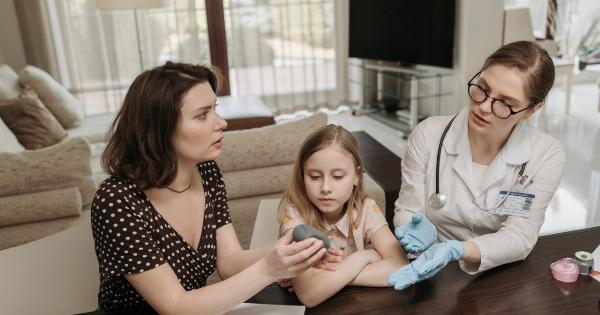Scoliosis is a medical condition characterized by an abnormal curvature of the spine. It affects approximately 2-3% of the population, with onset typically occurring during adolescence.
Students with scoliosis face unique challenges in the classroom, and it is important for teachers to be aware of strategies that can support their learning and overall well-being. In this article, we will explore various approaches that educators can implement to create an inclusive and supportive environment for students with scoliosis.
1. Awareness and Identification
One of the first steps in supporting students with scoliosis is to be aware of the condition and its potential impact on their daily lives.
Educators should familiarize themselves with the signs and symptoms of scoliosis, such as uneven shoulders, a prominent shoulder blade, or an asymmetrical waistline. This knowledge will enable teachers to identify potential students with scoliosis and provide them with the necessary support.
2. Flexible Seating Options
Traditional classroom seating can be uncomfortable and exacerbate pain for students with scoliosis.
Providing flexible seating options, such as adjustable chairs, exercise balls, or standing desks, can alleviate discomfort and enable students to find a position that works best for them. This flexibility promotes better posture and reduces the risk of worsening the spinal curvature.
3. Regular Movement Breaks
Encouraging regular movement breaks throughout the school day is beneficial for all students, including those with scoliosis.
Simple exercises and stretches can help relieve muscle tension and improve blood flow, ultimately reducing discomfort caused by the curved spine. Implementing short movement breaks every hour can greatly enhance students’ ability to focus and remain engaged in their studies.
4. Collaboration with the School Nurse or Health Professional
Collaborating with the school nurse or a health professional who specializes in scoliosis can be immensely valuable in supporting students with this condition.
These professionals can provide teachers with relevant information, guidance, and resources to ensure that appropriate accommodations and interventions are implemented effectively in the classroom.
5. Engage in Open Communication
Creating an environment of open communication is crucial for students with scoliosis. Teachers should foster a safe and non-judgmental space where students can openly discuss their needs and concerns.
This promotes self-advocacy and empowers students to take an active role in managing their scoliosis while also fostering a sense of trust and support within the classroom.
6. Individualized Education Plans (IEPs)
Individualized Education Plans, commonly known as IEPs, are formal documents that outline specific accommodations and modifications for students with disabilities or medical conditions.
For students with scoliosis, an IEP can include adjustments to seating arrangements, additional time for movement breaks, or access to assistive devices such as ergonomic backpacks. Collaborating with the school’s special education team to develop and implement IEPs can ensure individualized support and equal access to education.
7. Educate Peers on Scoliosis
Encouraging classroom discussions and educational activities about scoliosis can help promote understanding and empathy among students.
Students without scoliosis may not be familiar with the condition and its challenges, leading to potential misconceptions or stigmatization. By educating peers about scoliosis, teachers can foster a more inclusive and supportive classroom environment for all students.
8. Modify Physical Education Activities
Adapting physical education activities to suit the needs of students with scoliosis is essential.
Teachers should provide alternative exercises or modifications that can accommodate individual abilities, while still encouraging participation and promoting physical fitness. Consulting with physical education specialists or therapists can provide valuable insights and strategies for modifying activities in a safe and supportive manner.
9. Encourage Strong Home-School Collaboration
Maintaining a strong home-school collaboration is crucial in supporting students with specific medical needs such as scoliosis.
Teachers should regularly communicate with parents or guardians to understand any changes in the student’s condition, discuss concerns, and receive updates on any medical interventions or treatments. This collaboration ensures a holistic approach to supporting students with scoliosis and helps address their unique needs effectively.
10. Be Mindful of Mental Health
Living with a medical condition like scoliosis can often impact a student’s emotional well-being. Teachers must keep a close eye on any signs of distress or emotional challenges and provide the necessary support.
Promoting a positive classroom environment, fostering peer connections, and offering access to appropriate mental health resources can greatly contribute to the overall well-being of students with scoliosis.






























